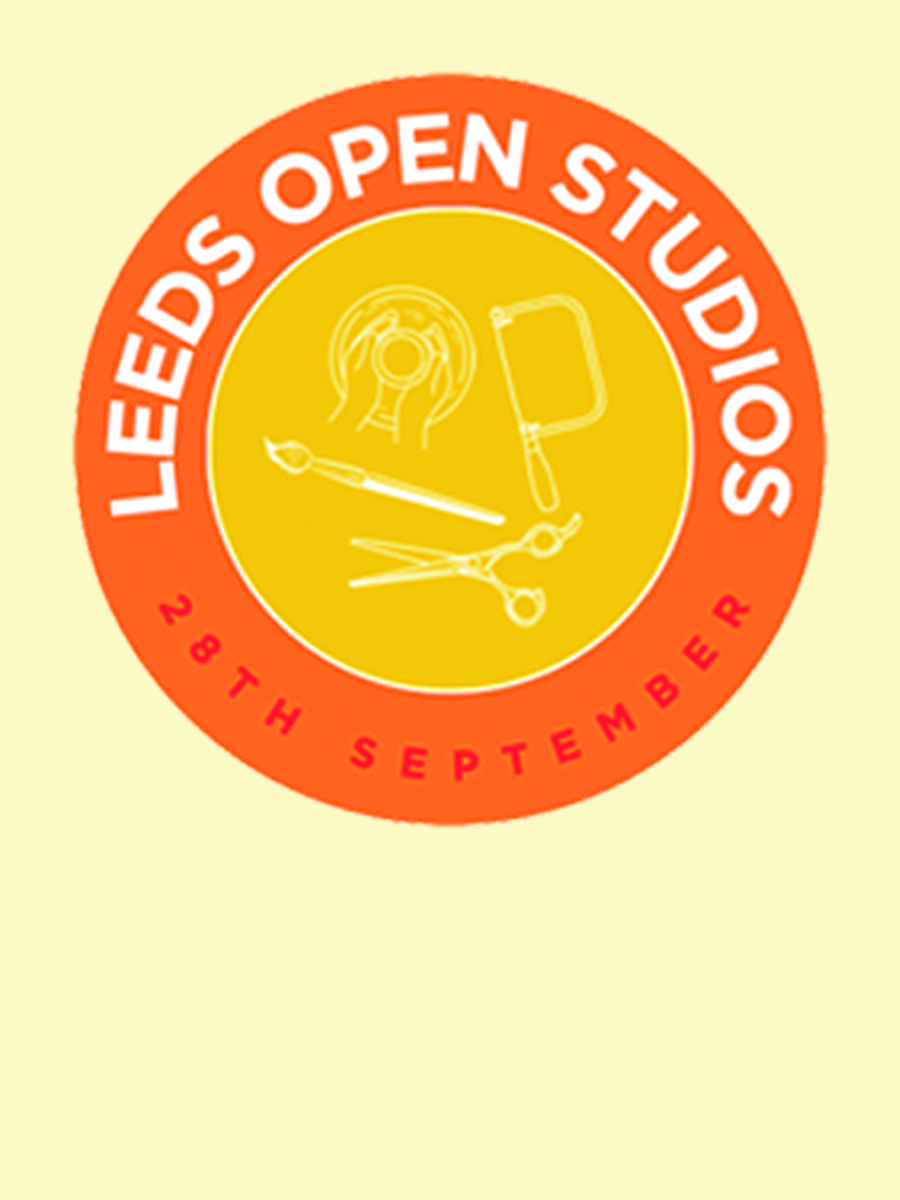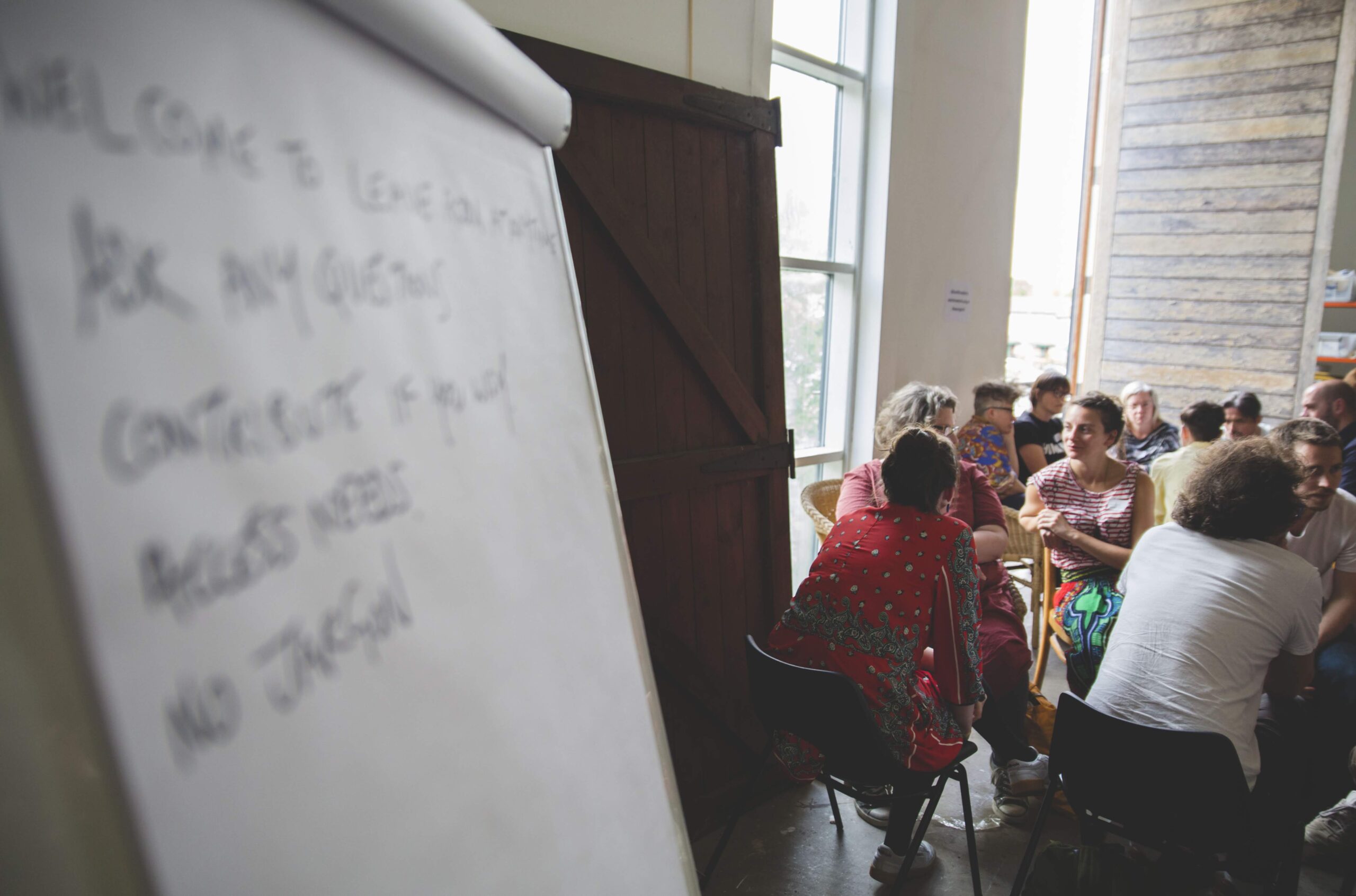Guild team member Kate has written a blog post on her experiences within the Guild programme, discussing space, place and working in a digital world…
Joining the Guild team at East Street Arts has been eye-opening; for the past six months I have been in post, it has been a pleasure getting to know the Guild Cohort – their beginnings, artistic vision, structure and future goals. Each one is unique in their locality and the people they engage with, yet similar in the challenges faced and passion for growth and sustainability. In this blog, I’m going to run you through the initiatives we have put in place for the Guild Cohort in 2021-2022 – a programme of activity that takes place digitally to account for ongoing uncertainties about COVID.
Studio Swaps:
During my first initial, individual, online chats with each member, their reasoning for joining Guild always came back to networking. Networking during a global pandemic is challenging to programme. Still, the ever-evolving Guild team has tried various methods to overcome such a challenge, and it was one I was keen to get involved with finding solutions for.
Members of the cohort had already formed connections at our initial pre-Covid residency here at East Street Arts in 2019, and had continued to connect at our monthly online drop-in sessions (Guild Hall) over the last year. In these physical and digital meetings, ideas for collaboration had already began to evolve between our cohorts.This, coupled with seeing how useful it is to have a space for our cohort to troubleshoot (in this case, an agony aunt style WhatsApp group) – led me to think about a studio swap model. Since Guild couldn’t orchestrate a physical studio swap, I wanted to explore delivering this digitally to encourage online discussion to strengthen the network, exchange learnings and avoid duplication in the sector.
Additional info Using video conferencing platforms, social media and messaging services the cohort are encouraged to begin and maintain an online discussion with their paired organisation, in a bid to strengthen the network and encourage shared learnings.
Guild Excursions
Besides understanding the need for networking as a driving force to be part of Guild, I was also understanding more about about how those running artist-led spaces & collectives increasingly struggled to make room for their creative practices. Many of the artists at the helm of these organisations had told us that their focus was so much logistical/troubleshooting/practical jobs that they had little room to focus on their creative work. Whether this is building maintenance, governance, fundraising, adapting spaces to COVID measures or cancelling/replanning years of work, I could understand why it would leave little room for creative expression. The need for this outlet is still really strong within the cohort members. Our spatial limitations over the past year have only exacerbated the need to connect on a logistical basis and build a network of creative peers. Guild Excursions are an initiative to aid in overcoming these hurdles, releasing a specific fund that enables cohort members to engage in creative events or develop their practice.
Space and Place/Connectivity and Creativity
In these two support initiatives, we talk of space and place concerning connectivity and creativity. Although words spanning lots of meanings, which can be considered in different ways and contexts, we have considered them:
Space; a continuous area of expanse/also the specific place (such as a building) our artists occupy.
Place; a particular position, point or location, in which a space is positioned.
These are both at odds inherently with the remit and necessity to deliver an online programme. The creative excursions and peer exchange we seek to encourage seems intertwined with these themes. And it will always be a struggle to have the physical remit of space/place as a foundation for exchange when the tactile, physical element of experiencing these places and the people who drive them is missing. We hope this separation can allow us to interrogate more what space and place means and how it can provide a framework for so much of the work we, and the artists we support, do in the artist-led sector.
Guild Conversations
Guild Conversations initially had a programme of events in 2020 as a direct response to COVID, which covered a huge range of topics in response to surveying what the artist-led sector needed. Whilst feeding into our direct work with the Guild cohort, the importance of space and place allowed me to realise that this was an urgent theme that needed to be the key focus of our upcoming Guild Conversations series. Our upcoming programme of online talks, beginning in September 2021, will see an exciting range of artists and speakers collaborate to interrogate the role of space and place in the artist-led sector. Providing a nuanced look at the often intersecting practical and ethical questions, we must consider when planning for, interacting with or leafing an artist-led space.
This series will consider how the artist-led sector has shifted towards digital practices and approaches. Yet, the practical needs of artist-led space and place continue to require hands-on approaches and meaningful connectivity. In fact, in putting this blog together I realise the mirroring of framework in what we are doing internally and the events we are presenting externally.
Guild Conversations will provide a timely opportunity for discussion on space and place in the artist-led sector through a series of workshops on accessibility and inclusivity, carbon footprints, sustainability, working with local communities, and alternative income schemes in artist-led spaces. Across these conversations, we will discuss provocations around these themes and how the ways these themes intersect have deepened during COVID-19. By bringing in a range of artists, opportunities for peer exchange, discussion and resource generation in response to these themes and provocations, Guild Conversations alongside our initiatives with the Guild Cohort, aims to contribute to the future resilience of the artist-led sector.



